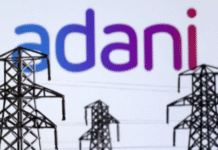
There is still much to be done to achieve a fully digitized financial service system in Bangladesh
Most readers must have already received a short message or SMS from their banks, asking them not to come to their branches amidst the coronavirus threat, and to use more of their online, digital, or alternate banking services. As we prepare ourselves to face interim or long tough times, we have to take shelter under alternative banking or financing services rather than physically going to bank branches.
Digital banking and financial services in Bangladesh started with online banking services. Online banking is commonplace now. According to Bangladesh Bank data, 87% of bank branches in Bangladesh are online and 8% are partially online, meaning 95% of bank branches in Bangladesh can do online banking. While 95% online coverage for bank branches is an impressive number, statistics are meaningless without proper context.
So, when we know that according to financial inclusion insights, only 35.3% of the Bangladeshi population has access to banks, then the 95% availability of online banking is certainly not enough coverage for digital financial services and financial inclusion. While mobile financial services (MFS) played a great role in boosting financial inclusion in Bangladesh in a fairly short period, for several reasons, we cannot say it is performing up to its potential.
In this growing economy of 166 million people, we have already achieved 94% mobile internet penetration and mobile financial services accounts for the majority of digital payments (PwC, 2019). However, a large part of the digitization is still limited to peer-to-peer (P2P) fund transfer, and that too is mainly by over-the-counter (OTC) users, not by registered users.
According to 2018 data, 44.4% of the Bangladeshi population has access to mobile money, but only 16.9% has a registered account. And 64% of mobile money users are over the counter users who don’t have registered accounts (Financial Inclusion Insights, 2018). This signifies that there is a clear lack of adequate adoption of MFS.
Then comes the issue of service portfolio. While MFS operators like bKash, Rocket, Nagad, etc. provide a range of services, most users (OTC users) still use MFS for P2P fund transfer services only. Moreover, fund transfer charges are also high on the customer end.
For these reasons, the adoption of MFS is at a very basic level in terms of service portfolio as well. For further financial inclusion, agent banking services have been initiated and almost 20 banks now have agent banking operations. While it has covered a lot of the unbanked population and eased the banking process with a biometric system, current agent banking activities are primarily limited to deposit and transfer, and loan services are rarely available to the rural agent banking users.
Hence, the current situation denotes that our version of mobile digital financial services offers only deposit accounts, money transfer, and payment solutions. And in most cases, it has not been able to include crucial services like credit and insurance for rural and unbanked users.
For existing digital banking, we have mobile apps and cards, but according to Bangladesh Bank, 87% of our card transactions are ATM transactions, meaning the primary usage of cards is withdrawing money and it has not been widely accepted as an alternative to cash.
To establish a proper digital financial system, a lot of challenges need to be taken care of. Other than the lack of adoption, one major issue is the lack of interoperability. While each system is somewhat digital, they are not fluid. For that reason, one user must rely on several services of several operators to avail all financial services. From the service providers’ end, the lack of partnerships is also responsible for this. This lack of interoperability is also a big obstacle in the way of achieving a cashless economy.
Another issue is the high charges for these services. Customers in Bangladesh, Nepal, and Sri Lanka pay 1-4% charges on the transaction volume to avail bank/mobile money wallet payment services (PwC, 2019). For example, to avail a basic service like money transfer, a bKash user in Bangladesh pays 2% and even the agent banking user pays around 0.25% of the transferred amount. These charges, on top of the lack of interoperability, make digital finance less attractive for customers.
A truly digitized financial system requires a secured, contactless, and converged financial platform. This platform should be flexible enough to include new technologies like blockchain and artificial intelligence-based customer intelligence. For the users, it means ease of usage, fluid transfer of funds, and greater flexibility in payment methods. And for the service providers and merchants, it means less redundancy, greater security, and harnessing strategic partnerships for better customer services.
The journey towards a fully digitized financial service system needs to be supported by an appropriate digitization roadmap from regulatory authorities. This roadmap should address issues like infrastructure improvement, incentivizing digital payment for the right audience, and partnering with key players in digital finance space.
Mamun Rashid is a partner at PwC.









